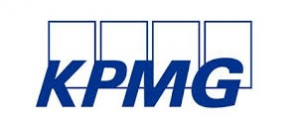Developing a corporate cost-saving culture
22.02.2017Company: Amcham
The success of any organisation is built on strong financial foundations. Increasing revenue is part of the equation, but finding savings is another way to improve profitability. This is why cost management – including level of costs, cost structure and cost development - is a challenge for any business or institution, whatever their sector and market. The recession and long road to recovery have also put further pressure on public and private organisations to cut costs at every level and in every area of the business.
The Barometer Cost Management, a yearly survey of European companies on cost management conducted by Expense Reduction Analysts and the EBS Business School defines a corporation’s Culture as one of the 5 success factors in cost management alongside Organisation, Strategy, Information and Tool. The key field of “Culture” includes subject matters such as the motivation of all parties involved in cost management, the company’s attitude with regards to internal communications, the level of participation from senior managers in cost management, employees’ individual responsibility with regard to a cost-oriented behaviour, staff competency in cost management as well as their individual training opportunities.
Lead by example and communicate
Successful, sustainable, cost-reduction efforts must be driven by a cost-management philosophy embedded in a company’s culture. This is more than changing budget targets annually. If big savings and negotiations are a C-level responsibility, medium and small-sized cost savings are everyone’s business. Communications are an essential tool to implement a cost-reduction culture, inspired and led by Management. Sharing information about costs throughout the organisation, and linking that knowledge to corporate strategy, should be the first step in reducing costs.
Explaining the value of saving money in equivalent terms to revenue and what it does to the bottom line can help employees understand the bigger-picture significance behind cost-reduction measures. For example, if staff members realise that 1 million Euros in company savings is equivalent to 5-10 million Euros in sales, they could be more inclined to find areas to reduce costs. Employees should understand that no cost or expense area should be considered “sacred” or go unchallenged. For example, if documents are always sent to clients using one-day air shipping, considering second-day air or ground delivery on non-time sensitive items could result in savings. The end result is that no small opportunity is neglected: Cost savings must be at the forefront of everyone’s mind.
Know spending patterns
Where are the Euros going? Overhead expenses should be regrouped and scrutinised to create a well-defined picture of spending patterns. This analysis, usually not performed to lack of time and resources, can reveal overlooked savings opportunities. Mistakes can be costly when discounts are not applied, when there are invoicing errors, or when the same goods or services are ordered separately by different departments. A spending review will also note other inaccuracies such as unnecessary expenses or redundant stock.
Recognise genuine needs and consumption patterns
Understanding spending patterns (identifying what is ordered and what is used within the company) can expose the strengths and weaknesses of the current process. This makes it possible to regroup requests from different services and locations to leverage purchasing power and achieve better pricing. This analysis may also highlight whether the resources provided to employees (information technology, telecoms, equipment, etc.) are being used properly and to their full potential. Examining spending data – as well as process and policies - can help business leaders reframe and redirect a spend culture, and invigorate efficiency. It is essential to rethink the relationship with the suppliers: are they provided with the right information? Are the tenders detailed and accurate to enable suppliers to offer the best and most relevant products, services and prices?
Benchmark and develop goals
After spending patterns are pinpointed, benchmarking is the next step. Benchmarking, a quality improvement tool, is the comparison of one organisation’s practices and performance to those of others. It seeks to identify standards, or "best practices," to apply in measuring and improving performance. Benchmarking results should lead to the development of savings goals. Are the targets realistic and achievable?
Monitor results
Achievements will need to be monitored over time to document actual savings, to adjust to changes or new requirements, and to ensure that any terms and conditions negotiated are applied.
An effective, sustainable cost-management programme and organisation-wide mindset requires a strategic approach, combined with a savings philosophy rooted in the company’s culture. Employee engagement efforts, an analysis of spending and consumption patterns, monitoring results, and incentivising employee efforts are significant factors that lead to savings.
Tags: Finance | Business Development |






